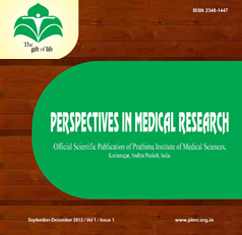Simulation in Anesthesia: Enhancing Skills, Safety, and Patient Care
Background
In recent years, simulation has emerged as a critical tool in anesthesia education and improving patient care. As the demands of anesthesia practice have grown more complex, simulation offers a safe and controlled environment for healthcare providers to refine their skills, practice emergency scenarios, and improve team dynamics—all while minimizing risk to patients. This editorial explores how simulation is revolutionizing anesthesia practice, examining the current trends and potential for future developments.
Evolution of Simulation in Anesthesia Education
Anesthesia training traditionally depended on a combination of hands-on experience in the operating room and theoretical learning. While this approach had its merits, it posed risks when practitioners are juniors and in unfamiliar or high-risk scenarios. The rise of simulation technology has addressed these shortcomings by offering a way to replicate both routine and rare clinical events. 1 Simulation allows anesthesia providers to practice a wide range of skills, including the administration of anesthesia, management of adverse reactions, and the handling of life-threatening complications, all within a controlled, no-risk environment. 2, 3
From basic mannequins to advanced high-fidelity simulators, the technology has greatly expanded the range of possible scenarios for training. Trainees can now practice repeatedly, refining their skills in a way that was not possible in the traditional setting. The ability to simulate complicated cases that may not frequently occur in clinical practice but require immediate and expert responses is particularly valuable. This form of "repetition without consequence" is important in building the competence and confidence of anesthesia providers. 4
Current Trends in Simulation for Anesthesia Practice
Crisis Resource Management (CRM) Training: 5
Simulation has proven especially effective in enhancing crisis management skills. Anesthesia practice is filled with moments of heightened stress—such as difficult intubations, cardiovascular instability, and arrest —that demand quick decision-making and teamwork. CRM-focused simulation training fosters communication, leadership, and coordination among anesthesia teams, helping professionals prepare for these high-pressure moments. These skills are vital, as anesthesia providers often need to act decisively under time constraints and limited information.
Improvement in Procedural Proficiency: 6
One of the most significant contributions of simulation in anesthesia is its ability to enhance technical skills. Anesthesia providers can practice procedures such as intubation, intravenous line placement, and regional anesthesia techniques without the pressure of performing them on real patients. High-fidelity simulators, which replicate human physiology, allow users to refine their techniques and respond to a wide range of physiological conditions, increasing both skill and confidence in real-world procedures.
Virtual Reality (VR) and Augmented Reality (AR): 7
The integration of VR and AR is taking simulation to new heights. Virtual reality enables practitioners to immerse themselves in realistic, virtual operating room environments, where they can simulate not only technical procedures but also critical thinking and decision-making in complex cases. In contrast, augmented reality overlays digital data—such as real-time patient vitals or anatomical images—onto the physical environment, enhancing the precision of procedures like intubation or nerve block placement.
Team-Based and Multidisciplinary Training:
An increasingly important trend is the use of simulation for team-based training. Anesthesia practice no longer occurs in isolation; anesthesiologists frequently collaborate with surgeons, nurses, and other medical professionals. Simulation-based team training fosters effective communication, mutual respect, and role clarity in high-stress situations. By practicing together in simulated scenarios, multidisciplinary teams can improve their collective ability to manage emergencies like cardiac arrest or massive hemorrhage, ensuring that everyone knows their role in urgent situations. 8
Ongoing Professional Development and Assessment:
Simulation is also becoming an essential tool for the continuous professional development of practicing anesthesiologists. Many certification and recertification programs now incorporate simulation-based assessments, testing practitioners on both technical skills and decision-making in high-pressure scenarios. This approach not only evaluates current competencies but also highlights areas for improvement, ensuring that anesthesiologists maintain a high level of skill as they progress in their careers.
Enhancing Patient Safety:
The integration of simulation in anesthesia has a profound impact on patient safety. By providing a risk-free environment for practicing complex procedures and responding to emergency situations, simulation helps reduce the likelihood of errors in real clinical settings. Anesthesia providers can rehearse the management of adverse events such as drug reactions, airway emergencies, and cardiovascular instability, ensuring they are well-prepared to act swiftly and correctly when these situations arise.
Moreover, training in crisis resource management allows providers to develop not only technical competence but also leadership and team coordination skills, which are essential in preventing errors and improving patient outcomes. Research indicates that simulation-based training can lead to a significant reduction in anesthesia-related complications, contributing directly to safer patient care.
Challenges and Future Potential
While simulation offers tremendous benefits, its widespread implementation faces several challenges. High-fidelity simulators, advanced VR/AR systems, and other cutting-edge technologies come with substantial financial costs, making them less accessible in certain healthcare settings, especially in low-resource environments. Additionally, effectively integrating simulation into existing training programs requires thoughtful planning and curriculum development, which can be time-consuming and complex.
Despite these challenges, the potential for simulation in anesthesia education is vast. As technology advances, we can expect even more sophisticated and realistic simulations that incorporate artificial intelligence (AI) to provide personalized learning experiences. Additionally, the continued development of virtual environments and team-based scenarios will allow anesthesiologists to gain deeper insights into complex cases, improving their ability to make decisions under pressure and collaborate effectively.
Conclusion
Simulation has fundamentally changed the practice of anesthesia education . By providing a safe space for anesthesia providers to practice technical skills, manage crises, and improve team dynamics, simulation plays a vital role in enhancing the quality of patient care. With ongoing advancements in technology, the potential for simulation in anesthesia is set to expand further, ensuring that the next generation of anesthesia professionals is better equipped to handle the challenges of modern healthcare.


